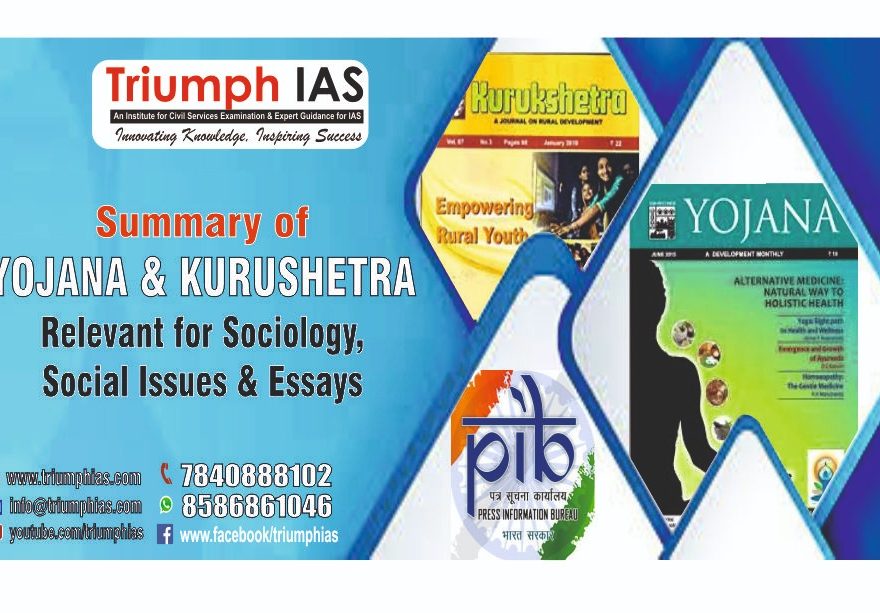Restructuring Public Health in India
Relevance: Mains: G.S paper II: Polity & Governance: Welfare schemes for vulnerable sections of the population by the Centre and States and the performance of these schemes; mechanisms, laws, institutions and Bodies constituted for the protection and betterment of these vulnerable sections.
• Issues relating to development and management of Social Sector/Services relating to Health.
CONTEXT:
• The outbreak of corona virus is alerting the world about global public healthcare.
COVID and International Cooperation:
• The WHO calls for boldest actions to fight against corona pandemic in association with UNO and warns countries to not undergo lockdown without public healthcare measures.
• The leaders of G-7 industrial power house pledged to halt this pandemic. There is a proposal to launch COVID-19 Solidarity Response Fund.
• The Asian Development Bank recently announced $6.5 billion package to its member countries to fight against the pandemic.
• Indian PM recently has given a call to SAARC nations for joint strategy to save people of this region.
Weak Public Healthcare System:
• The public healthcare system is not equipped with intensive care unit and ventilators, pathology and clinical laboratories, surgical instruments with sufficient medical and paramedical forces.
• It resulted in hard healthcare (like pharmaceuticals, surgical instruments etc.) and soft healthcare (like service of doctors, specialists, nurses) supply constraints.
• Also, there is a total failure on the part of global public healthcare system in consolidating and deploying the health force to combat corona and safeguard the global community.
Re-engineering of Healthcare System:
• It is time to think of building a healthcare network with national buffer and global pump house for public health services. The proposed national buffer can be operated as a global pump house for healthcare and to save global population.
• The world trade organisation in association with its member countries can work out a plan to build national buffer for health service by supporting and standardising medical education.
China’s Public Healthcare Model:

• China dealt with the pandemic using national buffer and pump house of medical and paramedical forces as defense force.
• The trained medical and paramedical forces pooled for public healthcare service using a
network is called national buffer and the healthcare service is provided by operating this buffer as pump house during the time of health emergency.
• China is the first country to adopt the strategy of national buffer and pump house for public healthcare service during the outbreak of corona.
Global Trade in Health Services:
• The WHO in association with WTO is drawing the attention of its members towards the global public healthcare system and promoting global trade in health services.
• WB and IMF can further identify ways to support this mechanism.
• WTO has made provision for trade in services under general agreement on trade in services
(GATS). Serious discussions are going on at international level to bring healthcare under its ambit and promote global trade in health services.
• They are working out strategy to promote global trade in health service covering medical education under different modes of general agreement on trade in services and to operate trade in health service of consumption abroad (Mode-1), cross border consumption (Mode2), commercial presence (Mode-3) and presence of natural persons ( Mode-4).
Conclusion:
• Ensuring public healthcare security through the national buffer by pooling medical and paramedical force and operating it as global pump for deployment of medical force during health emergencies should be the goal of global health policy.
• The careful examination of population cartogram shows that large countries of the world with small population shrink in size if public healthcare system is not sound enough to protect their population. This is a serious warning to all developed nations to work out some strategy.
• This strategy for global trade in health services increases export earnings of member countries besides acting as an engine of economic growth.
• The strategies should aim at exploiting country’s comparative advantage in niche areas of health sector with regional and international cooperation.
For more such notes, Articles, News & Views Join our Telegram Channel.
Click the link below to see the details about the UPSC –Civils courses offered by Triumph IAS. https://triumphias.com/pages-all-courses.php

